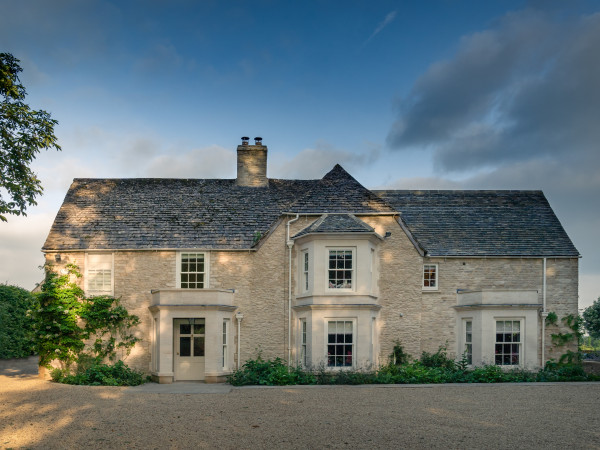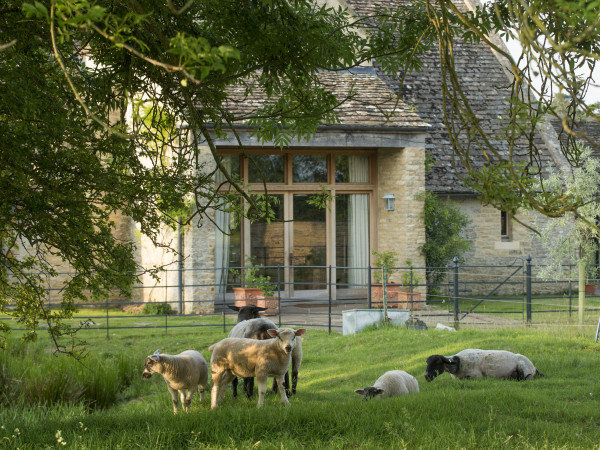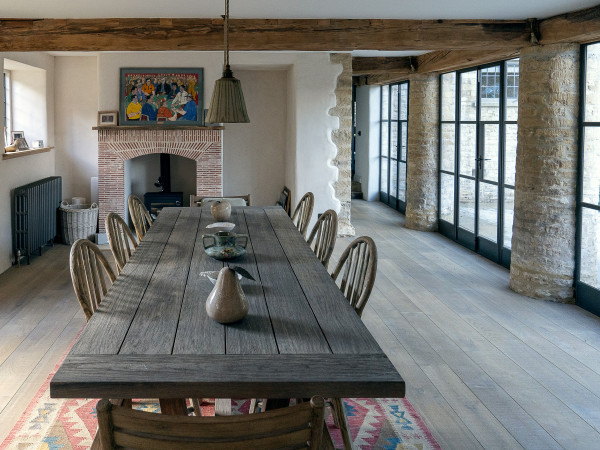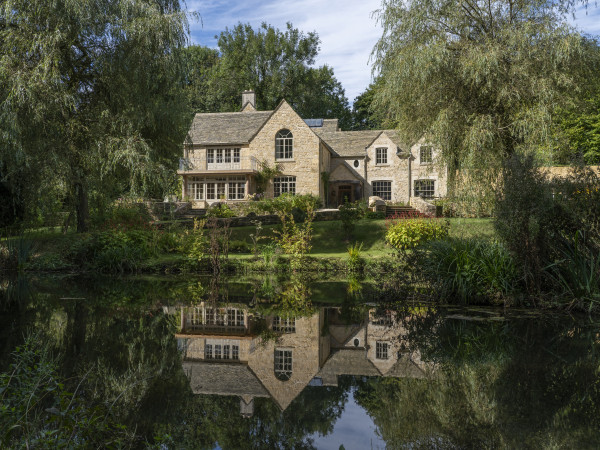



For many buyers, the words ‘new build’ can send shivers down the spine: inducing images of garish red brick boxes and invoking thoughts of practical living and convenience. For the most part, the last century of ‘new builds’ have had nothing much going for them at all.
But a new wave of beautifully designed and executed ‘new builds’ are springing up across the country, from the likes of architects Christian Fleming and Ben Pentreath. Built with sustainability and lasting quality in mind, these are properties reminiscent of the days of doing things properly.
It’s great news for a nation suffering a housing shortage; the old adage of ‘buy cheap, buy twice’ most definitely applies to houses too and we’ve clearly learnt our lesson as many architects spend their days improving badly built ‘new builds’. We really do need to be creating timeless, classic homes, that will last a lifetime.
An example of a brilliantly constructed ‘new build’, is the Old Manor at Uley in Gloucestershire. Famous for the whole property having been relocated, the real story is that the house has been carefully put together using the finest reclaimed materials, biomass energy and underfloor heating. It really is the perfect mix of old meets new.
But this is an extreme case; most new builds have specific site conditions to meet or client aspirations to fulfil. As Christian Fleming states, “using reclaimed materials is so important to giving a sense of time and place, anything to take the shine away. But don’t overdo it, otherwise it starts looking like your granny’s attic, full of salvaged bric-a-brac.”
Working with reclaimed materials can be troublesome. The rich patina of age-worn stone can appear very dark next to creamy new pointing, for example, so often it’s better not to use reclaimed rubblestone but rather reclaimed quoins, which helps frame the building and is what tricks your eye. It all needs to be properly thought about and considered, or the result can look a little ‘pic n’mix’.
Fleming has acquired many old tricks passed down from builders and craftsmen along the way to help tone down the ’new’. From coating fresh green oak in Thompson’s Water seal to stop the tannins leaching out and darkening the wood, preserving that lovely oak umber, to understanding that Hartham Park Bath stone can completely differ in colour from year to year. ‘From mellow creams to bright white, despite being from one quarry! Although you can rub gutter silt into it to help age it’.
‘The use of materials is the art,’ he says, ‘the part you most need to touch and feel. No new build is ever the same – although I wish it was!’
Important too, to select the right builder for the right client, which can only be learnt from working with a wealth of builders and understanding their strengths and capabilities very well.
When asked if people know what they want when they come to him, Fleming remarks that most people have a very strong sense of what they want, or what they think they want, and his job is put what’s in their minds onto a piece of paper. The noticeable trend now, as opposed to ten years ago, is that people don’t want to commission enormous houses anymore. They don’t want to be saddled with crippling oil bills, or to pass on a home that is too expensive for their children to keep up.
The epidemic of the last year and its resulting lockdowns have only reinforced this trend, as owners now live in their kitchens and don’t necessarily want masses of rooms or for every element of their life to focus around the central building. Party barns have replaced billiard rooms; pool houses, gyms, games rooms and woodsheds are located away from the main house. It’s a sort of house-fracturing and quite a shift, but a great way for families with children living in the country to keep them happy and entertained safely at home as they grow up.
When asked if people really care about building sustainably, Fleming comments that it is always the first thing people ask for, but also the first thing to be struck off when the quote comes back. For all the talk of renewable energy sources like biomass heating and solar panels, Fleming often recommends spending more on incredibly good insulation and different ‘breathable’ clay blocks as a simpler way to save cost. His insight is that people do want to do their bit, but that they mostly want to avoid big bills.
As with all architects, Fleming is that rare combination of artist and mathematician, or as he describes himself, ‘a jack of all trades, and master of none’. An economics graduate who took a turn in banking but found it too intense, he then trained at the Leith School of Food and Wine and is a self-professed master of puff pastry pies, insisting on salted butter always being better than non. Having always wanted to do architecture but initially daunted by the thought of seven years of training, he finally returned to it and has gone from strength to strength.
‘I always wanted to do it, liked it and I hope have become good at it, but it took time. When I think of my early drawings I grimace. My windows in particular… (he gulps), urgh, they were crude, ugly hatchet jobs for openings. If only they had taught Architecture at school’.
When you consider that children’s first drawings are of houses and the homes they dream of, perhaps this advice is very wise in continuing to inspire new generations of young architects to join the ranks and ensure that every new build to come echoes Fleming’s vision and skill.
Back to all Articles